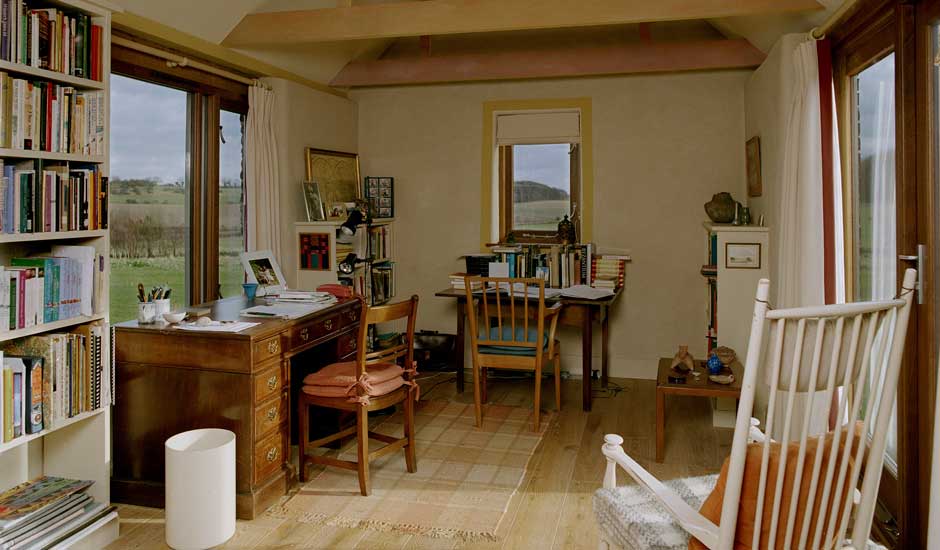Terry Ramsey, writing for the telegraph.co.uk, provides a summary of what he believes to be the best
crime books of 2015 (updated monthly). Below are the summaries of the books he has listed in this month's entry:
'
The Ghost Fields by Elly Griffiths 
This is the seventh instalment in Elly Griffiths' highly likeable
series of Ruth Galloway investigations. It won't disappoint fans and
deserves to win over new followers as it features one of her most
atmospheric stories coupled with her usual humour, characterisation and
eye for building up to a set piece.
The story starts with a digger driver at a new Norfolk housing
development uncovering the wreckage of a World War Two plane, complete
with a body sitting at the controls.
Naturally, there is more to this than meets the eye and forensic
archaeologist Ruth is soon on the case, once again helping her friend
and former lover DCI Harry Nelson. The enjoyable "will-they won't-they"
get back together soap opera of the duo's relationship continues through
the investigation – though why someone as bright as Ruth would yearn
for an unlikeable curmudgeon like Nelson is the biggest mystery of the
books.
Griffiths seems to be having some fun here with the
Agatha Christie style of country house mystery – she sets much of the
story in the rambling, forbidding Blackstock Hall, home of the
Blackstock family, who seem to have as many skeletons as they do
cupboards (which is a lot). The house even gets cut off at one point -
shades of Christie's And Then There Were None.
For someone who's
'day job' as a university archaeologist sounds a tad dull, Ruth has
more than her fair share of excitement (including rekindling a
relationship with American TV presenter Frank Barker). Fun and skilfully
written.
384pp, Quercus, £16.99
What She Left by TR Richmond 
This deliciously modern take on the psychological thriller caused quite
a stir well before it hit the bookshops, as it was the subject of a
serious bidding war between publishers. Now we get to see what the fuss
was about.
The story is based on the notion that, in years gone
by, when a young girl such as Alice Salmon died, her memory might soon
fade away. But these days, we all leave a digital trail: emails, social
media posts, blogs, online journals, published articles . . . Our lives
are all out there, waiting to be pieced together.
Alice, an
aspiring journalist, dies when she tumbles from a bridge, but was it an
accident, suicide or something more sinister? Her rather creepy former
university teacher, Dr Jeremy Cooke – who is obsessed with Alice (and
her mother) – embarks on a project collecting everything he can find
about her and trying to discover the 'real' Alice. He is painstakingly
assembling a jigsaw of the dead girl's life, and the book itself is like
that: documents, letters all sorts of information, all coming out in a
seemingly random order. Of course, the writer is much smarter than that,
and the way information is delivered is cleverly crafted to create a
shifting, mesmerising, mysterious story.
While Cooke is creepy,
Alice is carefully revealed to be a sparky, intelligent, infuriatingly
self-absorbed, ambitious girl with a tendency to drink too much.
The difficulty (for an author) of telling a story through many
characters (Cooke, Alice, her mum, her boyfriend, her best friend and so
on), is ensuring that every voice is distinct and authentic. But no
problem here. What She Left is very well-written and intelligently
realised, occupying a territory half way between literary novel and
thriller. It overdoes things though, extending the story for about 50
pages longer than necessary, just when the reader is breathless for the
conclusion. Still, a memorable debut.
Incidentally, the author
is billed as "an award-winning journalist" but searching the web for "T R
Richmond" reveals no trace of such a journalist. He or she have covered
their tracks. A little ironic, given the premise of the book.
384pp, Michael Joseph, £12.99
Silver Bullets by Elmer Mendoza
"Introducing the godfather of Mexican crime fiction" pronounces the
cover of this book - which might sound a bit niche, but to be honest it
is remarkable (assuming it is true) that there has not been a
translation of an Elmer Mendoza book before. He has been writing his
celebrated crime novels since 1999, has had rave reviews and is a
leading figure in 'narcoliterature' , depicting the violent and
debilitating effect drug wars have had on Mexican society.
(Incidentally,Mendoza is also a university professor of literature.)
This novel, from 2008, features his frequent protagonist, Detective
Edgar Mendieta, a police officer in the drug-trafficking city of
Culiacan. When a prominent lawyer is murdered, it looks like just
another example of day-to-day corruption (Mendieta is every bit as weary
and cynical as you might expect). But the killer used a silver bullet -
and a few days later the assassin seems to have struck again.
Mendoza's writing style (smartly translated by Mark Fried) could never
be called easy - his habit of using reported speech and running a whole
conversation together into a single paragraph, means the reader has to
concentrate. But it also helps create the claustrophobic atmosphere and
sense of urgency and edginess that makes this novel so convincing.
Demanding, different and impressive.
240pp, Maclehose Press, £14.99
Woman of the Dead by Bernhard Aichner 
This German thriller has been a European sensation, selling millions of
copies across the continent, before arriving here. It centres on Blum, a
wife and mother who (of course) has a dark secret in her past. When her
husband dies in what looks like a hit-and-run accident she is convinced
his death is no accident and sets out to get revenge on the men
responsible.
It is easy to see why readers have been drawn to
Woman of the Dead in large numbers. It is simply but grippingly written
(here in an elegant translation by Anthea Bell), told from the point of
view of a deeply flawed but understandable central character and it has
some of the dark elements of Nordic noir: the hard-bitten Blum is
reminiscent of Lisbeth Salander and the importance of historic sex
crimes also echoes
The Girl With the Dragon Tattoo.
However, the revenge thriller plotline becomes a little formulaic and
the 'reveal' at the end is too easily spottable from some way off. But
there is no doubt that Aichner has a talent for keeping readers hooked -
this is a gripping read and the character of Blum lives long in the
mind.
288pp, Weidenfeld & Nicolson, £14.99
Toxic by Jamie Doward 
“Sometimes banks are more dangerous than bombs” runs the sell-line on
the cover of this new conspiracy thriller by British journalist Jamie
Doward. And a good line it is too, as it captures the spirit of the
times: banks are not just untrustworthy but evil, with the power to
bring down the Western world.
Add a febrile plot involving Arab
plotters, the CIA, a nuclear power station and a headless, handless body
washed up on an English beach, and you have the ingredients for a book
that is bang on the mood of the moment.
At the heart of the
story is Kate Pendragon, a financial investigator seconded to MI5, who
makes a likeable central character with a memorable penchant for
cocktails and random one-night stands. Unfortunately, some of the
secondary characters are less well drawn and can be tricky to
differentiate. Is this person from the CIA, MI5 or one of the Saudi
Prince's advisers, you might find yourself wondering, as the action
jumps between locations. This slows down the early chapters, but the
later stages rattle along satisfyingly. The plotting is a bit loose and
there's a feeling that Doward, rather than being driven by a central
idea, has picked his zeitgeist-y elements and then come up with a recipe
to suit his ingredients. However, there's an enjoyably tense will-she
won't-she climactic scene, which sees Kate risk the ultimate sacrifice.
Doward appears to have been trying hard to create a
bang-up-to-the-minute thriller and, even if it falls short, Toxic is a
promising debut. He could crack it next time.
352pp, Constable, £19.99'



























